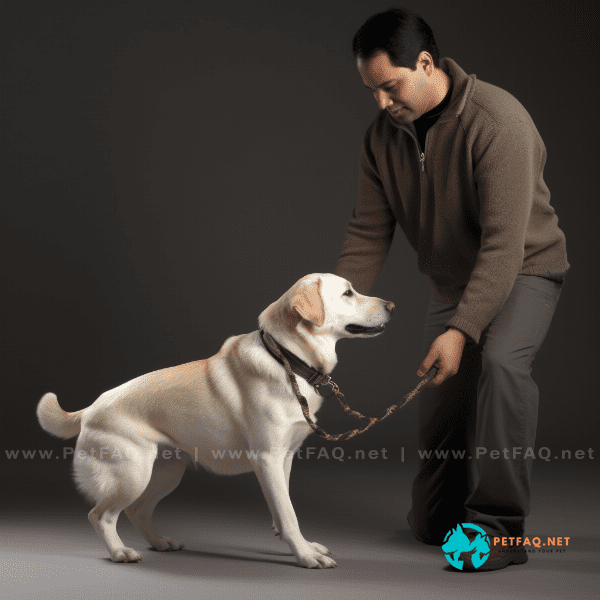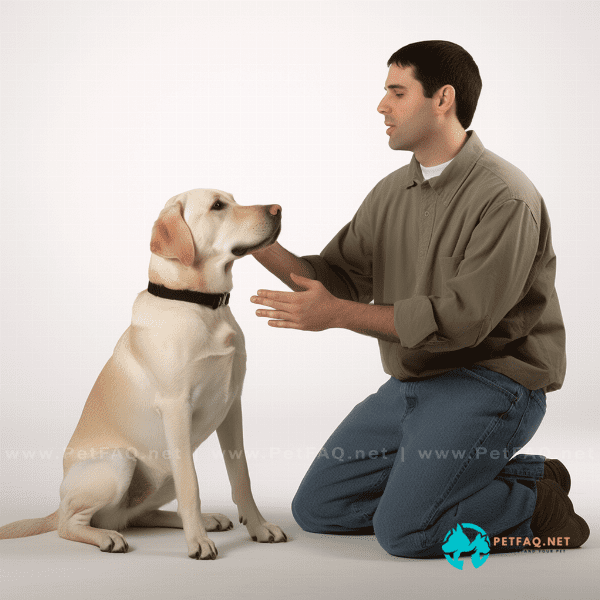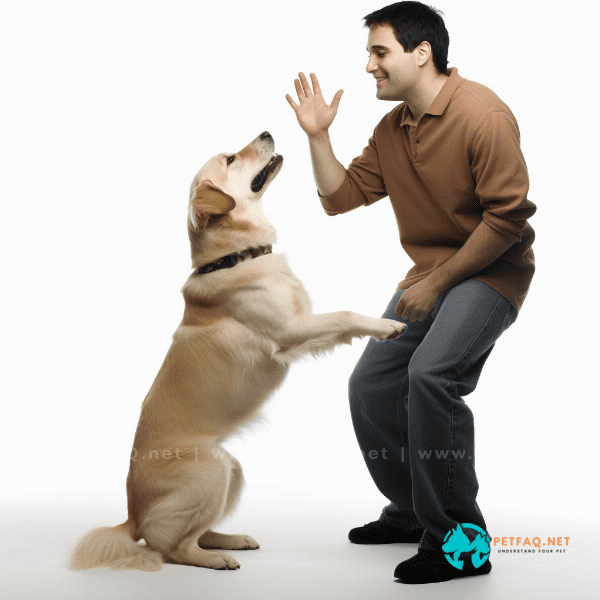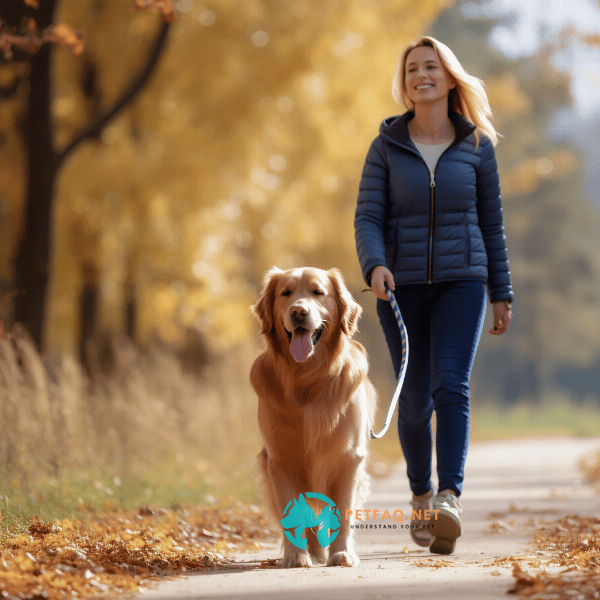Table of Contents
- Understanding the Principles of Dog Whisperer Training
- Creating a Positive Training Environment for Your Dog
- Developing Effective Communication with Your Dog
- The Power of Body Language in Dog Whisperer Training
- Establishing Rules and Boundaries for Your Dog
- Teaching Basic Commands Using Dog Whisperer Techniques
- Addressing Behavioral Issues with Dog Whisperer Training Methods
- Strengthening Your Bond Through Play and Exercise
- Using Positive Reinforcement to Encourage Good Behavior
- Taking Your Dog Whisperer Training to the Next Level: Advanced Techniques
Understanding the Principles of Dog Whisperer Training
Dog whisperer training techniques are based on the idea that dogs are pack animals and respond well to strong and confident leadership. The principles of dog whisperer training focus on building a strong bond between you and your dog, while establishing rules and boundaries to ensure that your dog understands their place in the pack.
Building Trust and Respect
The first principle of dog whisperer training is to build trust and respect between you and your dog. This involves understanding your dog’s body language and responding appropriately to their signals. Dogs communicate primarily through body language, so it’s important to be able to read your dog’s signals in order to understand their needs and respond to them effectively.
Establishing Rules and Boundaries
The second principle of dog whisperer training is to establish rules and boundaries for your dog. This means setting clear expectations for your dog’s behavior and consistently enforcing those rules. Dogs thrive on routine and structure, so having clear rules and boundaries in place helps your dog feel secure and confident in their role within the pack.
Communicating Effectively
The third principle of dog whisperer training is to communicate effectively with your dog. This means using clear, concise commands and body language to convey your expectations to your dog. Dogs respond best to positive reinforcement, so it’s important to praise your dog when they do something right and redirect their behavior when they do something wrong.
By understanding these principles of dog whisperer training, you can build a stronger bond with your dog and establish a happy and harmonious relationship based on trust, respect, and effective communication. With practice and patience, you can master these techniques and create a happy and well-behaved dog that is a joy to be around.

Creating a Positive Training Environment for Your Dog
Creating a positive training environment is essential to successful dog whisperer training techniques. Dogs are sensitive to their surroundings, and a positive training environment can help your dog feel safe and comfortable, which will make it easier for them to learn and follow your commands.
Minimizing Distractions
The first step in creating a positive training environment is to minimize distractions. Dogs can be easily distracted by sights, sounds, and smells, so it’s important to choose a quiet and secluded area for your training sessions. This will help your dog focus on you and your commands, which will make the training process more effective.
Maintaining a Calm Demeanor
The third step in creating a positive training environment is to maintain a calm and assertive demeanor. Dogs are sensitive to their owner’s emotions, and a calm and assertive demeanor can help your dog feel more confident and secure. This will help your dog trust you and be more willing to follow your commands.

Developing Effective Communication with Your Dog
Developing effective communication with your dog is key to successful dog whisperer training techniques. Dogs are social animals and rely on communication to navigate their world. By developing effective communication with your dog, you can establish a strong bond and help your dog understand your expectations.
Using Clear and Consistent Commands
The second step in developing effective communication with your dog is to use clear and consistent commands. Dogs respond best to clear and concise commands, so it’s important to choose simple and consistent commands that your dog can easily understand. This will help your dog understand what behaviors are expected of them and make the training process more effective.
Building a Bond of Trust
The third step in developing effective communication with your dog is to build a bond of trust. Dogs are social animals and rely on trust to navigate their world. By building a bond of trust with your dog, you can establish yourself as a strong and confident leader and help your dog feel safe and secure. This will make it easier for your dog to follow your commands and respond to your signals.
By developing effective communication with your dog, you can establish a strong bond and create a happy and well-behaved dog that is a joy to be around. With practice and patience, you can use dog whisperer training techniques to build a stronger relationship with your dog and create a harmonious and happy home.

The Power of Body Language in Dog Whisperer Training
Body language is a powerful tool in dog whisperer training techniques. Dogs communicate primarily through body language, so understanding and using body language effectively can help you establish a stronger bond with your dog and communicate more effectively.
Using Assertive Body Language
The first step in using body language effectively is to use assertive body language. Dogs respond best to confident and assertive leaders, so it’s important to project confidence and authority through your body language. This includes standing tall, using firm but gentle hand gestures, and maintaining eye contact with your dog.
Understanding Your Dog’s Body Language
The second step in using body language effectively is to understand your dog’s body language. Dogs use a variety of signals to communicate, including tail wagging, ear position, and body posture. By understanding your dog’s signals, you can better understand their needs and respond to them effectively.
Reinforcing Positive Behaviors
The third step in using body language effectively is to reinforce positive behaviors. Dogs respond best to positive reinforcement, so it’s important to use body language to reinforce positive behaviors. This includes using a friendly tone of voice, smiling, and using positive physical gestures such as petting or giving treats.
By using body language effectively, you can establish a stronger bond with your dog and communicate more effectively. With practice and patience, you can use dog whisperer training techniques to create a happy and well-behaved dog that is a joy to be around.

Establishing Rules and Boundaries for Your Dog
Establishing clear rules and boundaries is a fundamental aspect of dog whisperer training techniques. Dogs thrive on routine and structure, and having clear rules and boundaries in place can help your dog feel secure and confident in their role within the pack.
Consistency is Key
The first step in establishing rules and boundaries is to be consistent. Dogs learn best through repetition and consistency, so it’s important to establish clear rules and boundaries and consistently enforce them. This means setting clear expectations for your dog’s behavior and following through with consequences when those expectations are not met.
Be Firm but Fair
The second step in establishing rules and boundaries is to be firm but fair. Dogs respond best to confident and assertive leaders, but it’s important to also be fair and consistent in your discipline. This means avoiding physical punishment and instead using positive reinforcement to encourage good behavior.
Reward Good Behavior
By establishing clear rules and boundaries, you can create a structured and secure environment for your dog. With consistency, fairness, and positive reinforcement, you can use dog whisperer training techniques to create a happy and well-behaved dog that is a joy to be around.

Teaching Basic Commands Using Dog Whisperer Techniques
Teaching basic commands is a crucial part of dog whisperer training techniques. Basic commands not only help your dog understand what is expected of them, but they also establish a foundation for more advanced training in the future.
Start with Simple Commands
The first step in teaching basic commands is to start with simple commands. Dogs learn best through repetition and consistency, so it’s important to choose simple and consistent commands that your dog can easily understand. This includes commands such as “sit,” “stay,” “come,” and “heel.”
Be Patient and Consistent
The third step in teaching basic commands is to be patient and consistent. Dogs learn at their own pace, so it’s important to be patient and consistent in your training. This means practicing commands daily and being consistent in your expectations and rewards.

Addressing Behavioral Issues with Dog Whisperer Training Methods
Behavioral issues can be a frustrating challenge for dog owners, but with dog whisperer training techniques, these issues can be addressed effectively. By using a combination of positive reinforcement and clear communication, you can help your dog overcome behavioral issues and become a well-behaved and happy member of your family.
Identifying the Root Cause
The first step in addressing behavioral issues is to identify the root cause. Behavioral issues can be caused by a variety of factors, including lack of exercise, boredom, anxiety, or a lack of clear boundaries. By identifying the root cause of the behavior, you can develop a plan to address it effectively.
Using Positive Reinforcement
The second step in addressing behavioral issues is to use positive reinforcement. Dogs respond best to praise and rewards, so it’s important to reward your dog for good behavior. This can be done with treats, toys, or simply with verbal praise and affection. Positive reinforcement helps your dog understand what behaviors are expected of them and encourages them to repeat those behaviors.
Establishing Clear Boundaries
The third step in addressing behavioral issues is to establish clear boundaries. Dogs thrive on routine and structure, so having clear rules and boundaries in place can help your dog feel secure and confident in their role within the pack. This means setting clear expectations for your dog’s behavior and consistently enforcing those rules.

Strengthening Your Bond Through Play and Exercise
Play and exercise are important components of dog whisperer training techniques. Engaging in play and exercise with your dog not only helps keep them physically fit, but it also strengthens the bond between you and your dog.
Choose Activities Your Dog Enjoys
The first step in strengthening your bond through play and exercise is to choose activities that your dog enjoys. Every dog has their own unique personality and preferences, so it’s important to choose activities that your dog finds fun and engaging. This can include playing fetch, going for walks, or playing with toys.
Make Time for Daily Exercise
The second step in strengthening your bond through play and exercise is to make time for daily exercise. Dogs thrive on routine and structure, so having a daily exercise routine can help your dog feel secure and confident in their role within the pack. This can include going for a walk, playing in the backyard, or taking your dog to a dog park.
Incorporate Training into Playtime
The third step in strengthening your bond through play and exercise is to incorporate training into playtime. This can include using basic commands such as “sit” or “stay” during playtime or using toys as rewards for good behavior. This helps reinforce positive behaviors and strengthens the bond between you and your dog.
By strengthening your bond through play and exercise, you can create a happy and well-behaved dog that is a joy to be around. With patience, consistency, and positive reinforcement, you can use dog whisperer training techniques to establish a strong bond based on trust and respect.

Using Positive Reinforcement to Encourage Good Behavior
Positive reinforcement is a powerful tool in dog whisperer training techniques. By rewarding good behavior, you can encourage your dog to repeat those behaviors and establish a foundation for more advanced training in the future.
Choose Rewards Your Dog Enjoys
The first step in using positive reinforcement is to choose rewards that your dog enjoys. Every dog has their own unique preferences, so it’s important to choose rewards that your dog finds motivating. This can include treats, toys, or simply verbal praise and affection.
Use Rewards Consistently
The second step in using positive reinforcement is to use rewards consistently. Dogs learn through repetition and consistency, so it’s important to consistently reward good behavior. This means using rewards immediately after the desired behavior is exhibited and being consistent in the rewards used.
Reinforce Good Behavior Often
The third step in using positive reinforcement is to reinforce good behavior often. Dogs respond best to frequent positive reinforcement, so it’s important to look for opportunities to reinforce good behavior throughout the day. This can include using basic commands such as “sit” or “stay” during playtime or using toys as rewards for good behavior.
By using positive reinforcement to encourage good behavior, you can establish a foundation for more advanced training in the future. With patience, consistency, and positive reinforcement, you can create a happy and well-behaved dog that is a joy to be around.

Taking Your Dog Whisperer Training to the Next Level: Advanced Techniques
Once you’ve established a foundation of dog whisperer training techniques, it’s time to take your training to the next level with advanced techniques. These techniques can help you address more complex behaviors and establish an even stronger bond with your dog.
Incorporating Socialization Techniques
The first advanced technique is to incorporate socialization techniques into your training. Socialization is an important aspect of Dog training, and exposing your dog to new environments, people, and animals can help them feel more confident and comfortable in a variety of situations. This can include taking your dog to dog parks or introducing them to new people and animals in a controlled environment.
Teaching Advanced Commands
The second advanced technique is to teach more advanced commands. Building on the foundation of basic commands, you can teach your dog more advanced commands such as “leave it,” “go to your bed,” or “roll over.” These commands not only help your dog understand what is expected of them, but they also help keep their minds active and engaged.
Using Off-Leash Training Techniques
The third advanced technique is to use off-leash training techniques. Off-leash training allows your dog more freedom and can help them develop more confidence and independence. This technique requires a strong foundation of obedience and trust, and should only be attempted in a safe and controlled environment.
By incorporating advanced techniques into your dog whisperer training, you can address more complex behaviors and establish an even stronger bond with your dog. With patience, consistency, and positive reinforcement, you can create a happy and well-behaved dog that is a joy to be around.
Frequently Asked Questions (FAQs) about Dog whisperer training techniques:
1. Are there any potential drawbacks or limitations to using dog whisperer training techniques?2. How long does it typically take for a dog to respond to dog whisperer training techniques?
3. Who developed the dog whisperer training techniques?
4. How does a dog whisperer approach dog training differently than other trainers?
5. What are the main principles of dog whisperer training techniques?



